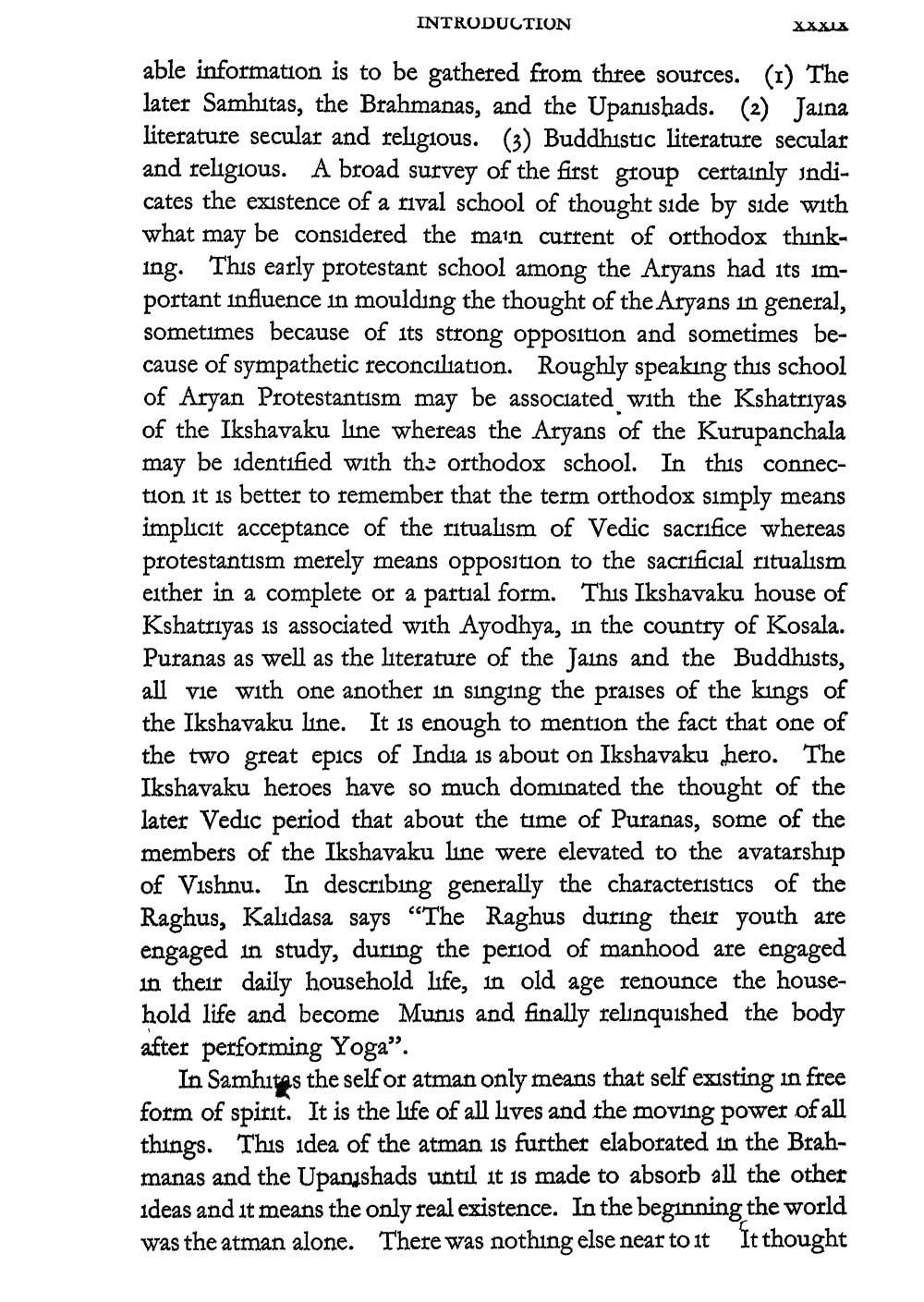________________
INTRODUCTION
Xxxix
able information is to be gathered from three sources. (1) The later Samhitas, the Brahmanas, and the Upanishads. (2) Jaina literature secular and religious. (3) Buddhistic literature secular and religious. A broad survey of the first group certainly indicates the existence of a rival school of thought side by side with what may be considered the main current of orthodox thinking. This early protestant school among the Aryans had its important influence in moulding the thought of the Aryans in general, sometimes because of its strong opposition and sometimes because of sympathetic reconciliation. Roughly speaking this school of Aryan Protestantism may be associated with the Kshatriyas of the Ikshavaku line whereas the Aryans of the Kurupanchala may be identified with the orthodox school. In this connection it is better to remember that the term orthodox simply means implicit acceptance of the ritualism of Vedic sacrifice whereas protestantism merely means opposition to the sacrificial ritualism either in a complete or a partial form. This Ikshavaku house of Kshatriyas is associated with Ayodhya, in the country of Kosala. Puranas as well as the literature of the Jains and the Buddhists, all vie with one another in singing the praises of the kings of the Ikshavaku line. It is enough to mention the fact that one of the two great epics of India is about on Ikshavaku hero. The Ikshavaku heroes have so much dominated the thought of the later Vedic period that about the time of Puranas, some of the members of the Ikshavaku line were elevated to the avatarship of Vishnu. In describing generally the characteristics of the Raghus, Kalidasa says “The Raghus during their youth are engaged in study, during the period of manhood are engaged in their daily household life, in old age renounce the household life and become Munis and finally relinquished the body after performing Yoga".
In Samhitas the self or atman only means that self existing in free form of spirit. It is the life of all lives and the moving power of all things. This idea of the atman is further elaborated in the Brahmanas and the Upanishads until it is made to absorb all the other ideas and it means the only real existence. In the beginning the world was the atman alone. There was nothing else near to it It thought




